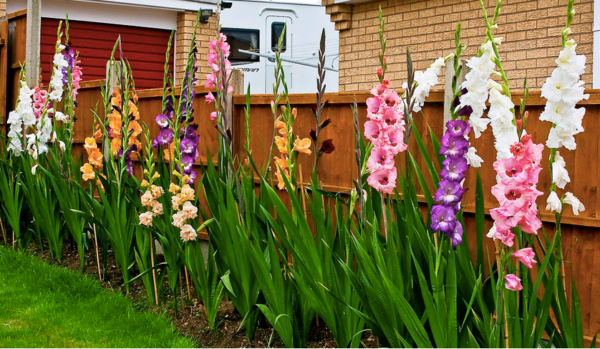 Each grower sooner or later thinks about growing perennial gladioli on the street. Such flowers look incredibly beautiful, which makes them a very original decoration for a flower bed or an alpine hill. But they are afraid of the cold, which forces florists to move them into the room for the winter season. It is very important to properly store gladioli in the winter at home.
Each grower sooner or later thinks about growing perennial gladioli on the street. Such flowers look incredibly beautiful, which makes them a very original decoration for a flower bed or an alpine hill. But they are afraid of the cold, which forces florists to move them into the room for the winter season. It is very important to properly store gladioli in the winter at home.
Content
Bulb digging rules
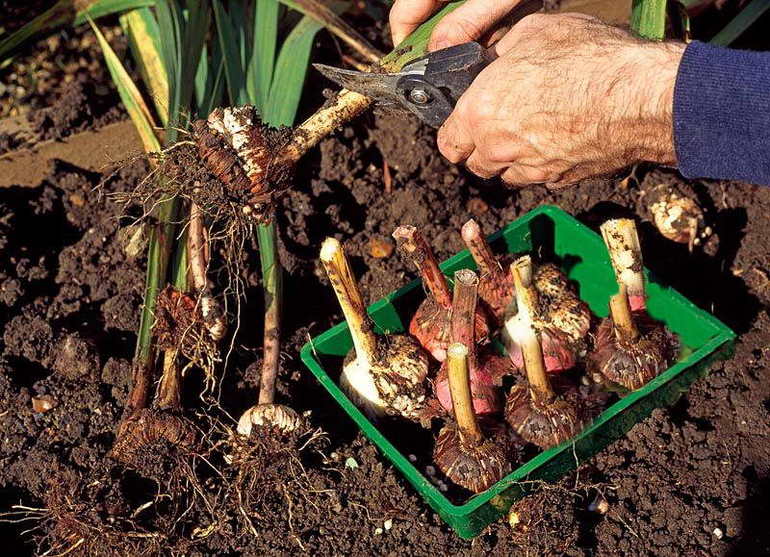 Being interested in the peculiarities of storing gladioli in winter at home, it is important to carefully consider the procedure for digging flowers from open ground. It is known that such a flower culture is very afraid of the cold, so it is important to have time to dig it up to the first frost.
Being interested in the peculiarities of storing gladioli in winter at home, it is important to carefully consider the procedure for digging flowers from open ground. It is known that such a flower culture is very afraid of the cold, so it is important to have time to dig it up to the first frost.
But do not rush to remove young individuals from the soil - from the moment of flowering completion, at least 4 weeks should pass for representatives of early varieties and about two months for later varieties. During this period, the bulb will finally ripen in the ground and will be ready for new conditions. Otherwise, it will rot and die.
Experts advise digging a perennial in October, when the weather is dry, but the heat has already receded. It is important to have time to prepare the culture before the onset of severe cold weather. In middle latitudes, this period falls on the 10-15th day of the second autumn month. It is during this period of time that it is best to take the seed from the soil.
But such a procedure is only half the battle. The next important stage is the preparation of plants for the upcoming cold weather. For this, the tubers need to be thoroughly dried, and then treated with antifungal agents. Only after that they are cleaned in a room for further storage in the winter.
Removing tubers of gladioli
Bulb storage for the winter begins with the excavation of planting material from the soil. This procedure is best performed after thorough drying of the substrate. It must not be watered for several weeks before the event. Using a garden tool, the earth needs to be dug to a depth of 30-40 centimeters and the bulb removed. First you need to get large specimens from the soil, and then small ones. The remaining green stems are cut before the digging or in the process.
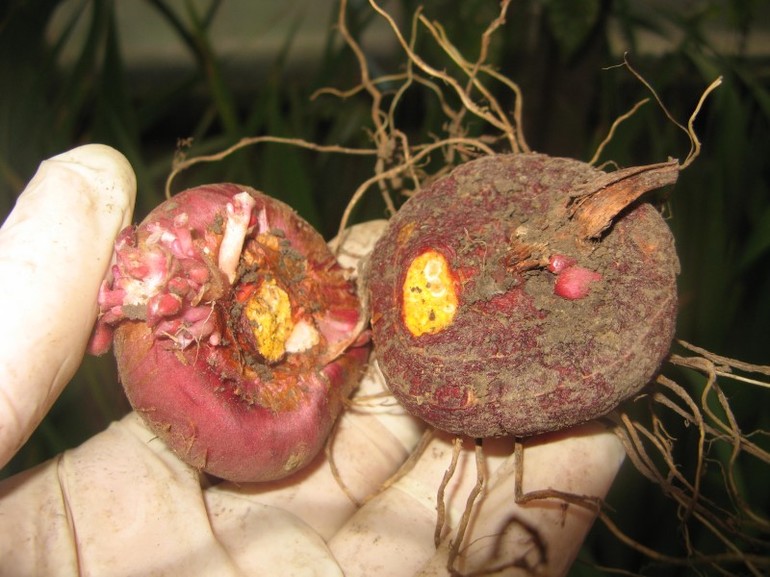
After that, the dug up tubers are cleaned of soil residues with a dry cloth. At this stage It’s important to make sure they are healthy and free from defects such as:
- traces of mold;
- putrefactive formations;
- sores;
- disease defeat.
Drying of dug bulbs can be carried out both at home and in open space on the street. But this is only possible in dry and warm weather for several weeks. For drying gladioli it is necessary to use cardboard boxes covered with paper. Under good weather conditions, the seed will dry in 14 days. Over such a period of time, the skin will acquire a brown tint and become rough. If you touch it, you can hear the sounds of rustling.
At home cultivation, the bulbs are dried under the influence of a temperature of 22-25 degrees Celsius. As the skin dries, the temperature regime can be changed up to 17-18 degrees.To avoid damage to the tubers by fungal diseases, they must be treated with fungicides before removal. For this, a solution of potassium permanganate or vitriol is used, which prevents the problem of the appearance of pathogenic microorganisms on plants and forms the natural protection of the material from dangerous diseases and fungi. The mentioned tool must be diluted in water, and then immerse tubers in it for half an hour.
Ultimately, the treated onions are removed from the liquid and re-dried in the apartment. If the husk is completely dry and begins to rustle, planting material can be placed in a suitable space for long-term storage.
Pest protection
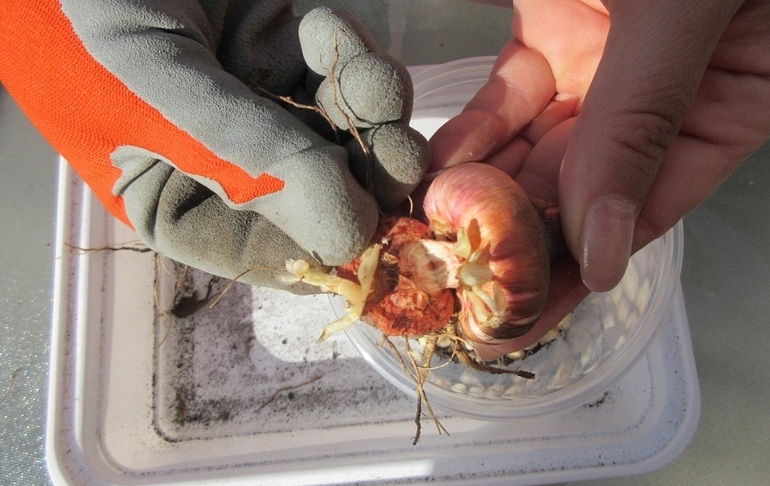 Each caring florist should be able to properly store the bulbs of gladioli in the winter in the apartment and know what is needed for this. An important stage in the storage of such flowers is protection against all kinds of pests. Among them are thrips. To avoid damage to the culture of such dangerous creatures, the bulbs must be treated with Inta-Vir. After that, they need to be dried again.
Each caring florist should be able to properly store the bulbs of gladioli in the winter in the apartment and know what is needed for this. An important stage in the storage of such flowers is protection against all kinds of pests. Among them are thrips. To avoid damage to the culture of such dangerous creatures, the bulbs must be treated with Inta-Vir. After that, they need to be dried again.
As an effective protective drug, you can use ready-made store-bought or home-made products created based on the following ingredients:
- 200 ml of water;
- 1 garlic head.
Chives of garlic need to be crushed carefully, and then transferred to water. After 20-30 minutes of infusion with a ready-made solution, the bulbs are treated. Then the tubers are removed from the liquid, and after final drying they are removed for further storage.
There are other equally effective ways to protect the seeds of gladioli from various pests. For example, their can be treated with candle paraffin, which is preheated and used to process the bulb. Once the substance has hardened, the tubers are moved to storage boxes. This method prevents the early development of tubers - they will not begin to grow earlier than the set time.
Parasite control
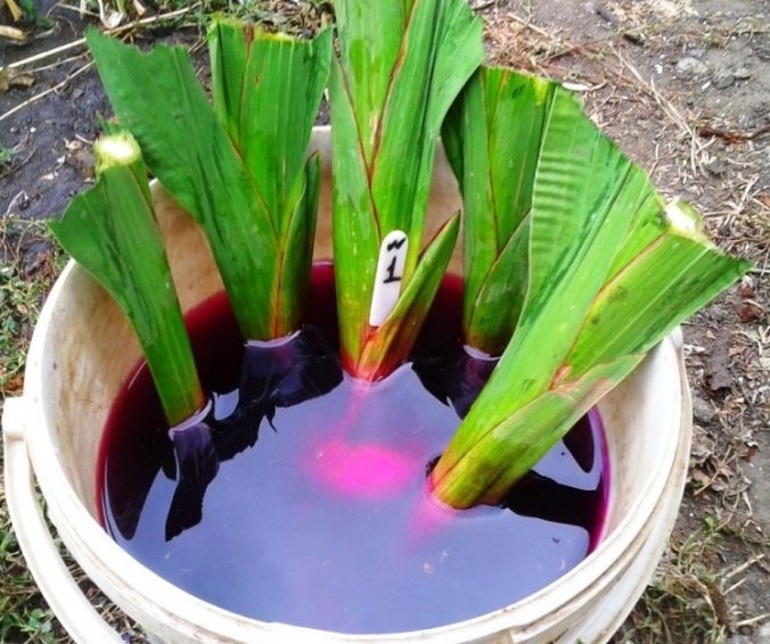 If dangerous pests such as thrips have managed to infect a crop, you need to know how to deal with them and how to store tubers affected by the disease in winter. The success of wintering is dependent on the timely detection of parasites in the tubers.
If dangerous pests such as thrips have managed to infect a crop, you need to know how to deal with them and how to store tubers affected by the disease in winter. The success of wintering is dependent on the timely detection of parasites in the tubers.
Unfortunately, thrips is the least visible creature that can mask itself in the seed material of gladioli, so flower growers often do not have time to notice it when examining the bulbs. To avoid the storage of affected specimens along with healthy ones, after they are removed from the ground, it is necessary to carefully examine each site.
To combat thrips, before moving the bulbs to the winter, you need to use a highly effective tool. For example, you can use:
- Alcohol solution. Experienced flower growers claim that alcohol is the main enemy of any flower pests. And thrips are no exception. To get rid of such parasites, it is enough to place the tubers in a glass container, and then put the swab soaked in alcohol there and carefully close the jar. Within a few hours, dangerous creatures will appear on the surface and die. If this does not happen, the procedure can be repeated.
- The drug "Actellik." Such a tool must be diluted with liquid in a proportion of 2 grams per liter. Then in it you need to place the seed and hold there for five minutes. Then the bulbs are additionally dried at a temperature of 20-25 degrees Celsius.
- Solution "Decis". Such a tool is sold in hardware stores and is available in the form of ampoules.Two ampoules are diluted in 10-liter water of warm water, after which a dug seed is placed in the finished solution. After a 30-40 minute treatment, the tubers are dried.
Storage conditions
To preserve gladioli for the winter, it is important to pay attention to the principles and conditions of their storage. Such plants freely tolerate winter, not only in the cellar, basement or other dark space, but also directly in the house. Only for this you need to take care of some conditions of detention, which are to maintain the necessary temperature, lighting conditions and humidity.
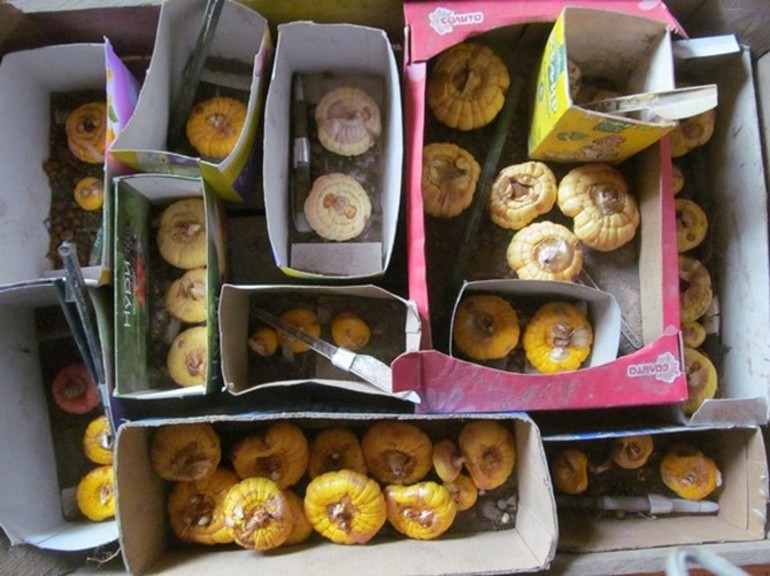
Firstly it is necessary to take care of the temperature regime. It's no secret that gladioli are able to be stored longer in a cool environment with a temperature of 4-12 degrees Celsius. If this indicator is higher, the tubers will begin to produce green shoots, which will lead to their death.
For home storage, it is advisable to place such seed on a glazed balcony using wooden boxes with ventilation holes and a lid that allows air to pass through. It is necessary so that the plants do not suffocate. The design should be moved to the balcony and put on a shelf. If the temperature on the balcony is kept below zero, the bulbs should be covered with warm material, for example, old clothes or a fur coat.
Each seed should be wrapped in newspaper and placed in a plastic bag. Small holes are made in it through which air will be supplied. Each package is placed in a separate compartment and stored there until the spring season. Gladioli are normally stored with fruits or vegetables.
Common mistakes
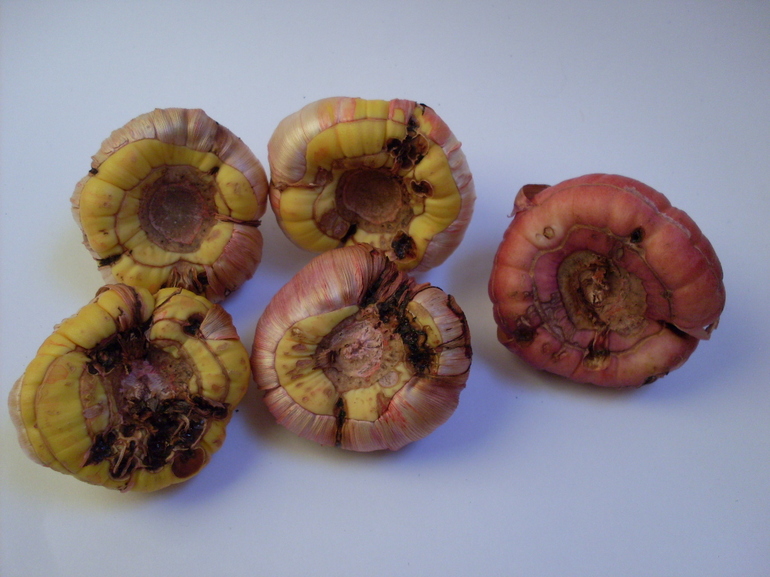 Many beginner growers make a lot of mistakes when they begin to figure out where and how to properly store gladioli for the winter.
Many beginner growers make a lot of mistakes when they begin to figure out where and how to properly store gladioli for the winter.
Examples of such situations include:
- Club material gets out of the soil too early, which prevents it from drying properly.
- Before placing the bulbs in a storage place, the flower grower did not treat them with fungicidal and insecticidal agents.
- The required temperature during storage on the balcony was not observed.
- The seed did not receive the right amount of air, which is why it suffocated.
In addition, some gardeners fall asleep in a box or bag of tubers with sawdust or earth, believing that this will provide them with reliable protection from the cold. However, such care often leads to negative consequences, such as moisture penetration. In this case, the rotting of the bulbs will occur much faster.
Useful Tips
To avoid such unpleasant situations and to make the storage of gladiolus bulbs as productive as possible, several recommendations of experienced gardeners should be considered. There is an opinion that planting material will be able to endure a long winter if it is regularly ventilated and checked for putrefactive formations or damaged areas.
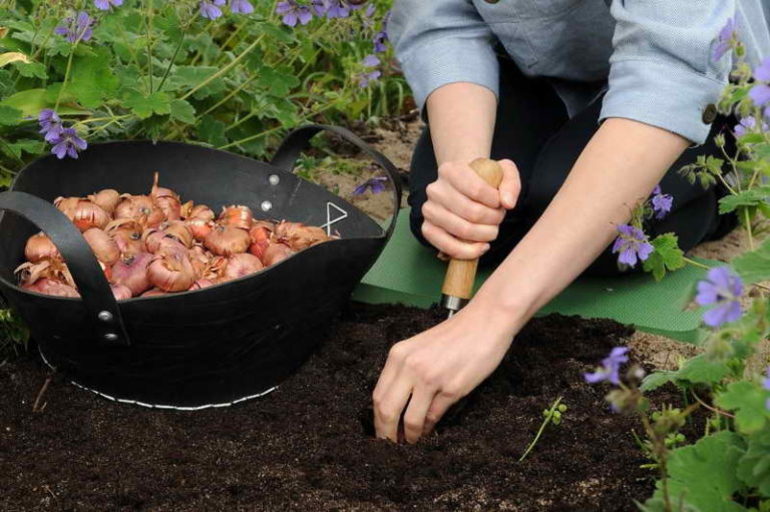
When the appearance of rot in any place onions do not need to rush to throw the bulb into the trash. The problem can be solved in another way. To do this, get rid of the affected part and treat the tuber with a weak solution of potassium permanganate. Then it is sprinkled with ash and placed in another place to avoid infection of healthy specimens.
Very often, the gladiolus tubers begin to dry out. If this happens, do not panic. Just before embarking on open ground, they need to be soaked in cool water for half an hour.For more productive rooting, water can be diluted with a stimulant.
As the heat returns in the spring, the tubers will begin to sprout too quickly. In order for this process to be carried out as quickly as possible, it is better to move them into an environment with good illumination and a higher ambient temperature and maintain there for several weeks.
It is not difficult to protect the bulbs of gladioli from death in the winter. To do this, it is enough to take into account the principles of storage, as well as provide them with proper care. In this case, the seed will move freely from year to year, and also give healthy and beautiful flowers for the next warm season. The immune system of perennials becomes stronger every year, which makes their reproduction possible. Soon, the favorite plants will transform the infield beyond recognition.

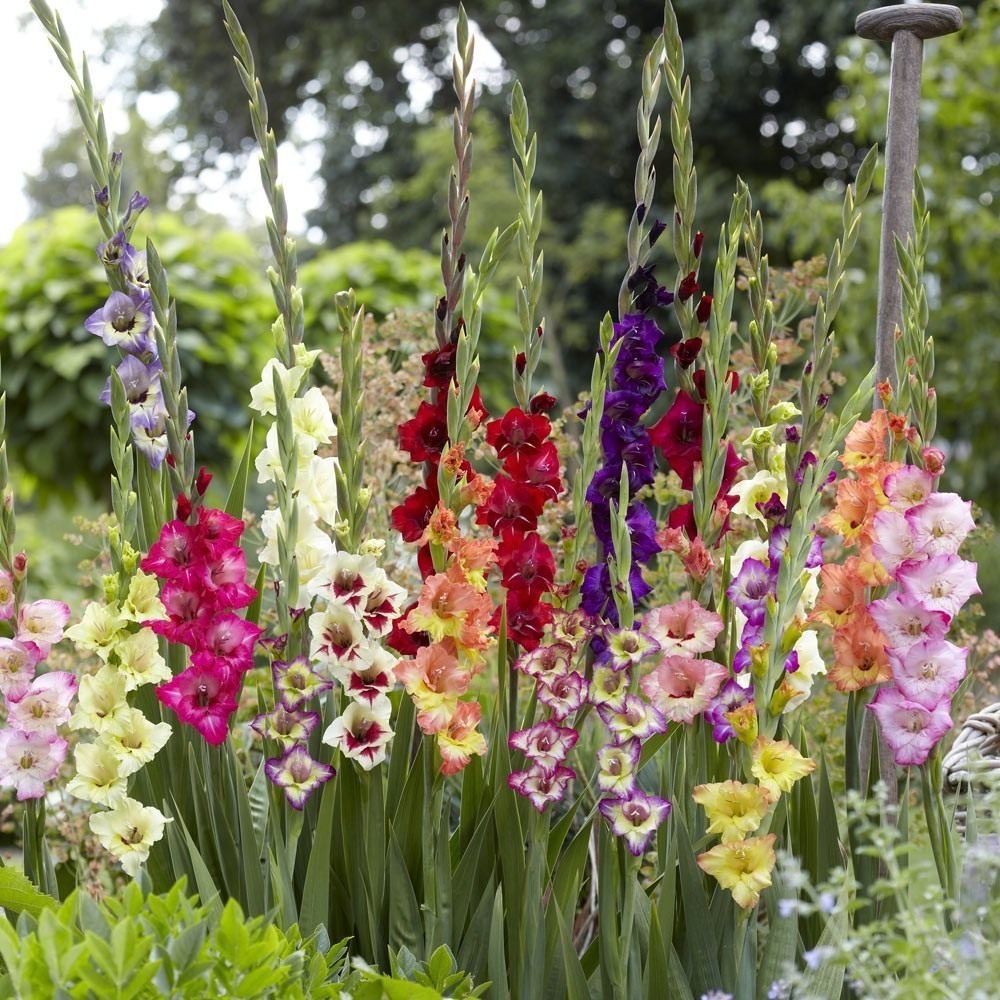
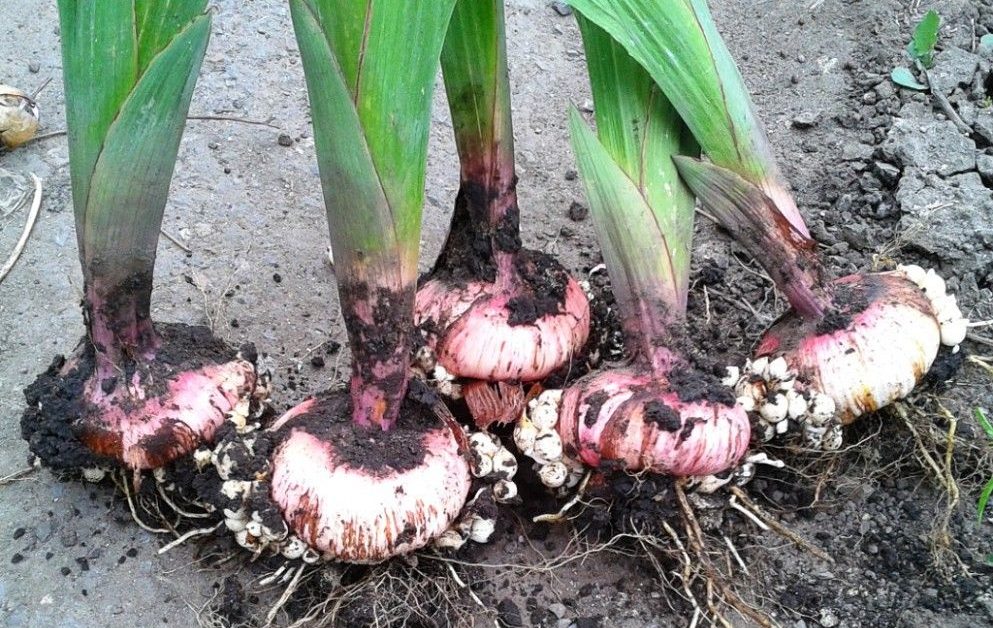
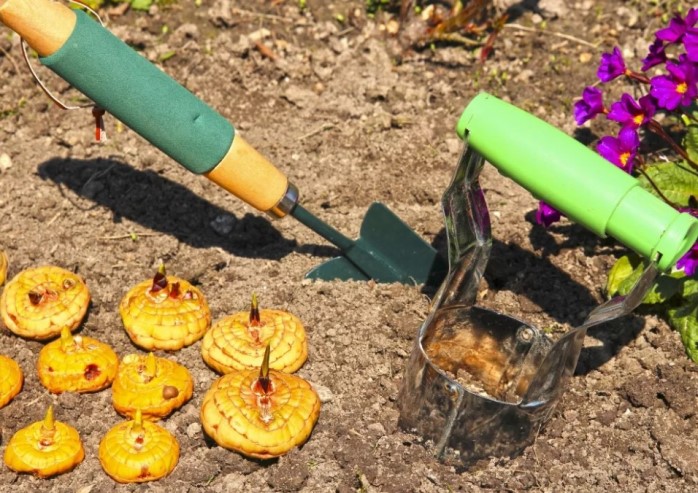 When and how to plant gladioli in spring in open ground
When and how to plant gladioli in spring in open ground How to deal with thrips on gladioli
How to deal with thrips on gladioli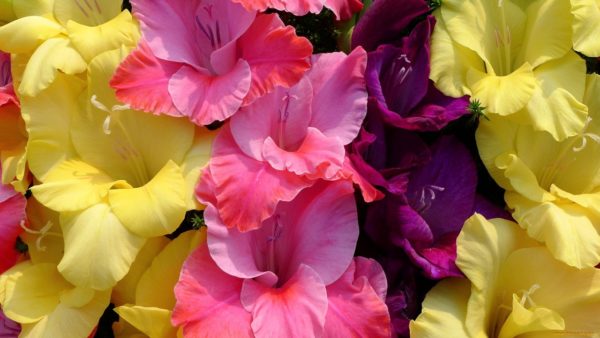 Gladioli: landing and care in the open ground
Gladioli: landing and care in the open ground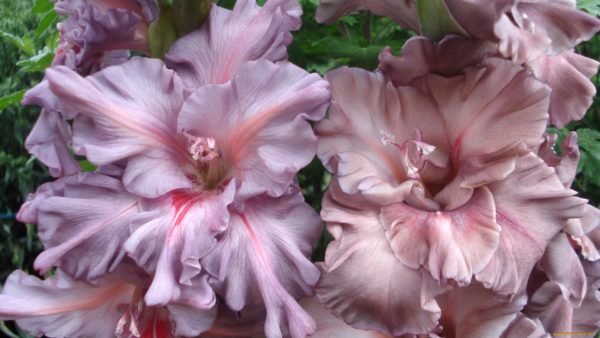 Children of gladioli: what to do with them
Children of gladioli: what to do with them